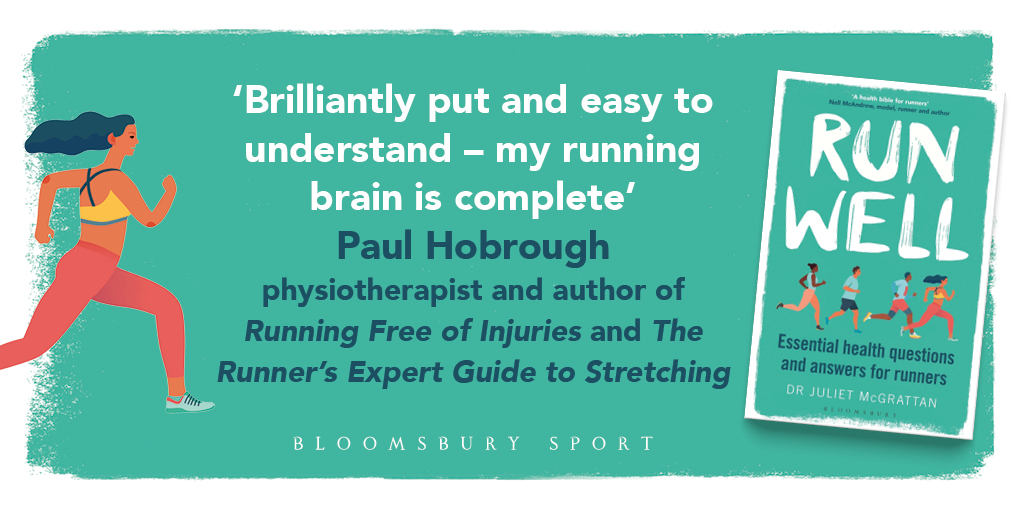Do you warm up before you run? Is it really necessary to warm up, isn’t a slow first mile enough? Will adding a warm up to your run really make any difference?
As a runner I know I just want to get out and run and if I’m honest I feel a bit silly warming up. I feel more comfortable just running in public rather than performing exercises, some of which look a bit odd!
While a slow first mile is fine and does get you warmed up, there are a few other things that you could be doing that will help your running, improve your performance (if that’s what you’re after) and make you less likely to get injured. A warm up can be ten minutes very well spent.
In my blog ‘The Toxic Ten: What it is and how to get past it’, warming up well was one of the ways to minimise that horrible feeling at the start of your run when you wonder why on earth you decided to take up running! So many runners identified and many were relieved to read it was something all runners experience and didn’t mean they were just unfit.
So, what benefit is a warm up going to give you? Understanding what is happening in your body will help you to understand why it’s worth the bother.
Here are the 6 things that you need to warm up and a few tips along the way.
1. Your cardiovascular system. It takes about one minute for our blood volume to circulate around our body. When we’re running we need four to five times as much blood to supply the extra oxygen our working muscles require and to remove the waste products that exercise produces. To achieve this our heart has to pump faster and more forcefully and our blood vessels dilate (widen). Our body has to fire up its systems, pass chemical messages around the body and adjust to the new demands.
Top Tip: Start with brisk walking and slow jogging then throw in a few short, faster strides to kick-start the process.
2. Your lungs. That extra oxygen your muscles need comes from the air you breathe in. To supply this your breathing rate and the depth of your breathing has to increase. This allows the waste gas carbon dioxide to be exhaled rapidly too. We normally take around 15 breaths per minute when we’re resting but when we’re running that increases to 40 to 60. Having a warm-up enables your lungs to prepare for the task to come.
Top Tip: It’s not proven to improve performance but try a few deep breaths into your diaphragm to allow full expansion of your lungs.
3. Your muscles. Most of us have charged out the door, run quickly and pulled a muscle at some point. Increasing our exercise gradually will help to warm up muscles but there’s more to it than that. There’s a mechanism called post activation potentiation which means that when a muscle has contracted once, the next time it does so, it will do it with greater force. You’ll get more out of a muscle that is warmed up. This is particularly important when it comes to big muscles like the glutes. Thanks to our sedentary lifestyle they’re often lazy and don’t fire during running. Getting them working during a warm up will make them more powerful during a run.
Top Tip: Use a resistance band for some squats and leg raises to activate the glutes before you run.
4. Your joints. Synovial fluid is the lubricant of our joints, it cushions and oils them. Activity stimulates the production of synovial fluid. Warm-up exercises will allow time for this increase in amount and for the fluid to circulate around the joint.
Top Tip: Dynamic stretches such as arm swings and hip openers take joints through their full range of movement and are ideal to include in your warm up.
5. Your nerves. There are nerve cells located in muscles, tendons and joints which send feedback information to the brain. They inform it of position and movement; this is called proprioception. The brain then responds with instructions about what to do next. This process is vital for us to be co-ordinated, balanced and accurate in our movements. Firing up these nerve pathways and waking up these lines of communication gets us ready for action, particularly in terms of making sure our joint position sense is activated and our leg joints therefore stable.
Top Tip: Include some exercises standing on one leg, sideways movements and fast footwork.
6. Your mind. Perhaps not something you would have thought of but taking a minute to focus on what you want from your run can be an important part of your warm up, particularly if you are racing or have a specific goal in mind. Some positive self-talk and imagining yourself reaching your target will help you succeed. Similarly, after a busy or stressful day, a brief time to decompress and clear your mind will make sure you get the most our of your run.
Top Tip: Find a quiet space and thirty seconds to focus your mind.
Warming up well is particularly useful in cold weather, to help reduce stitches and can also help your bowel adjust to activity and minimise the runner’s trots. It’s also extra important if you have asthma, are pregnant or are returning to exercise after illness. I also think that as we get older, warm ups become more important, particularly in terms of joint health and balance and co-ordination.
I hope this explains why it’s worth bothering to warm up. Whether it’s indoors before you go out or a brief stop after a few minutes of easy jogging, I advise making time for it. It could be the missing component to help you run well.
There are other tips like these in my new book Run Well: Essential health questions and answers for runners. Published by Bloomsbury and available to buy now.

Featured image: mohammed Hassan from Pixabay








Thank you for this. I must admit I don’t warm up at all, but I can see that I probably should! I never would have guessed that it was necessary to warm up so many different parts of the body. I will take this on board and try to do more in future.
It’s certainly a need I’ve become more aware of as I’ve got older too. Video of what I do will follow in next blog – in all it’s glory!!!!